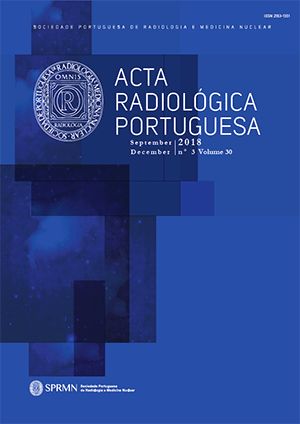Aggressive Fibromatosis of Desmoid Type - a Pictorial Review
DOI:
https://doi.org/10.25748/arp.15035Abstract
Aggressive fibromatosis of desmoid type comprises rare mesenchymal tumors characterized histologically by proliferation of fibroblasts and myofibroblasts. These lesions have intermediate behavior, characterized by infiltrative growth and local recurrence but an inability to metastasize.
Deep fibromatosis (desmoid type fibromatosis) can be located in abdominal wall (generally in sutures), intra or extraabdominal.
The best imaging modality for evaluation and staging of the deep fibromatoses is MR imaging. These well or ill-defined lesions generally present internal hypointense bands, with lack of enhancement in post contrast images (collagen bundles), are usually centered in an intermuscular location with a rim of fat ("split fat"sign), although invasion of surrounding muscle is frequent. Linear extension along fascial planes (the fascial tail sign) is also a frequent manifestation and is uncommon with other soft-tissue neoplasms.
MR image signal intensity may have an implication on tumor recurrence, with a higher recurrence rates in lesions with high T2 signal. In lesions undergoing radiation or drug therapy, MR surveillance has been used to assess response to treatment with a positive response demonstrating decrease in T2 signal, lesion enhancement and lesion size.
Downloads
Published
Issue
Section
License
CC BY-NC 4.0


